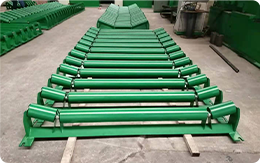 Afrikaans
Afrikaans  Albanian
Albanian  Amharic
Amharic  Arabic
Arabic  Armenian
Armenian  Azerbaijani
Azerbaijani  Basque
Basque  Belarusian
Belarusian  Bengali
Bengali  Bosnian
Bosnian  Bulgarian
Bulgarian  Catalan
Catalan  Cebuano
Cebuano  Corsican
Corsican  Croatian
Croatian  Czech
Czech  Danish
Danish  Dutch
Dutch  English
English  Esperanto
Esperanto  Estonian
Estonian  Finnish
Finnish  French
French  Frisian
Frisian  Galician
Galician  Georgian
Georgian  German
German  Greek
Greek  Gujarati
Gujarati  Haitian Creole
Haitian Creole  hausa
hausa  hawaiian
hawaiian  Hebrew
Hebrew  Hindi
Hindi  Miao
Miao  Hungarian
Hungarian  Icelandic
Icelandic  igbo
igbo  Indonesian
Indonesian  irish
irish  Italian
Italian  Japanese
Japanese  Javanese
Javanese  Kannada
Kannada  kazakh
kazakh  Khmer
Khmer  Rwandese
Rwandese  Korean
Korean  Kurdish
Kurdish  Kyrgyz
Kyrgyz  Lao
Lao  Latin
Latin  Latvian
Latvian  Lithuanian
Lithuanian  Luxembourgish
Luxembourgish  Macedonian
Macedonian  Malgashi
Malgashi  Malay
Malay  Malayalam
Malayalam  Maltese
Maltese  Maori
Maori  Marathi
Marathi  Mongolian
Mongolian  Myanmar
Myanmar  Nepali
Nepali  Norwegian
Norwegian  Norwegian
Norwegian  Occitan
Occitan  Pashto
Pashto  Persian
Persian  Polish
Polish  Portuguese
Portuguese  Punjabi
Punjabi  Romanian
Romanian  Russian
Russian  Samoan
Samoan  Scottish Gaelic
Scottish Gaelic  Serbian
Serbian  Sesotho
Sesotho  Shona
Shona  Sindhi
Sindhi  Sinhala
Sinhala  Slovak
Slovak  Slovenian
Slovenian  Somali
Somali  Spanish
Spanish  Sundanese
Sundanese  Swahili
Swahili  Swedish
Swedish  Tagalog
Tagalog  Tajik
Tajik  Tamil
Tamil  Tatar
Tatar  Telugu
Telugu  Thai
Thai  Turkish
Turkish  Turkmen
Turkmen  Ukrainian
Ukrainian  Urdu
Urdu  Uighur
Uighur  Uzbek
Uzbek  Vietnamese
Vietnamese  Welsh
Welsh  Bantu
Bantu  Yiddish
Yiddish  Yoruba
Yoruba  Zulu
Zulu Sealed Bearing Housing for Enhanced Performance and Protection in Mechanical Applications
Understanding Sealed Bearing Housings An Overview
Sealed bearing housings, a critical component in various mechanical systems, play a vital role in the effective functioning of machinery across industries. These housings provide a secure environment for bearings, ensuring operational efficiency and longevity. Understanding their design, applications, and benefits is essential for engineers, maintenance personnel, and anyone involved in machinery management.
What is a Sealed Bearing Housing?
A sealed bearing housing is a structure that encases bearings, providing protection from dirt, debris, and moisture while enhancing lubrication. The seal prevents contaminants from entering the bearing assembly, thereby reducing wear and tear. Typically made from high-quality materials such as cast iron, aluminum, or thermoplastic, sealed bearing housings are designed to withstand various working conditions and loads.
Key Components
Sealed bearing housings consist of several key components, including
1. Housing Body This is the main structure that contains the bearing and provides mechanical support. It must be robust enough to handle both radial and axial loads.
2. Seals The seals are critical for keeping contaminants out and retaining lubrication. They come in various designs, such as lip seals or labyrinth seals, and must be selected based on the specific application requirements.
3. Bearings The bearing itself is housed within the housing and performs the essential function of enabling smooth rotational or linear movement.
4. Mounting Features Many sealed bearing housings have various mounting options, such as flanged or pillow block designs, allowing for easy installation and alignment with other machinery parts.
Applications
Sealed bearing housings are utilized in numerous applications across different industries, including
sealed bearing housing

- Automotive In vehicles, sealed bearings are used in wheel assemblies, transmissions, and engines where reliability and performance are crucial.
- Industrial Machinery Conveyor systems, pumps, and motors frequently incorporate sealed bearing housings to maintain operational efficiency and reduce maintenance needs
.- Agriculture Equipment like tractors and harvesters often relies on sealed bearing housings to enhance durability and resistance to environmental factors.
- Marine Applications The maritime environment poses significant challenges, and sealed bearing housings are essential for protecting bearings from saltwater and other corrosive elements.
Benefits of Sealed Bearing Housings
The advantages of using sealed bearing housings are numerous
1. Enhanced Longevity By preventing contamination, these housings significantly increase the lifespan of bearings, reducing the frequency of replacements.
2. Reduced Maintenance With fewer maintenance needs, companies can save on costs and downtime, allowing for more efficient operations.
3. Improved Performance Sealed bearing housings contribute to smoother operation and better performance of machinery, which is essential in high-speed applications.
4. Versatility Available in various sizes and designs, sealed bearing housings can be adapted to meet the demands of a wide range of applications.
Conclusion
Sealed bearing housings are indispensable in modern machinery, providing protection, enhancing performance, and minimizing maintenance. Understanding their function and applications can significantly impact the reliability and efficiency of industrial processes. As technology continues to evolve, innovations in sealed bearing housing designs will likely lead to even greater efficiencies and reliability across various sectors. Proper selection and management of these components are crucial for anyone looking to optimize machinery performance and longevity.
-
Revolutionizing Conveyor Reliability with Advanced Rubber Lagging PulleysNewsJul.22,2025
-
Powering Precision and Durability with Expert Manufacturers of Conveyor ComponentsNewsJul.22,2025
-
Optimizing Conveyor Systems with Advanced Conveyor AccessoriesNewsJul.22,2025
-
Maximize Conveyor Efficiency with Quality Conveyor Idler PulleysNewsJul.22,2025
-
Future-Proof Your Conveyor System with High-Performance Polyurethane RollerNewsJul.22,2025
-
Driving Efficiency Forward with Quality Idlers and RollersNewsJul.22,2025





























